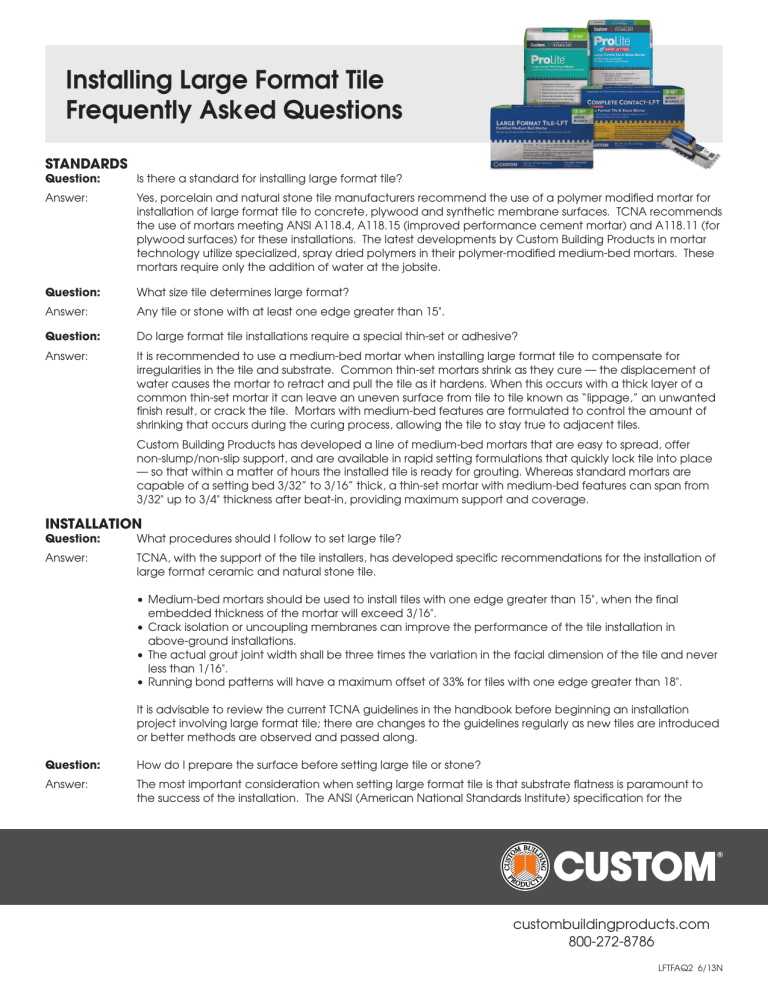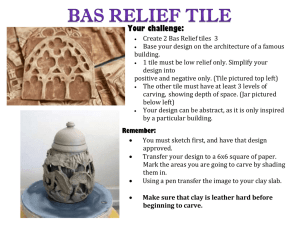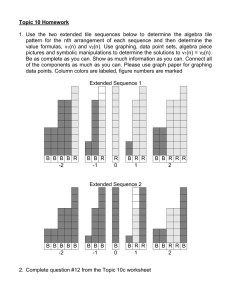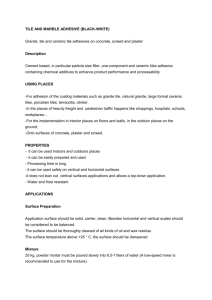Large Format Tile FAQ - Custom Building Products

Installing Large Format Tile
Frequently Asked Questions
STANDARDS
Question:
Answer:
Is there a standard for installing large format tile?
Yes, porcelain and natural stone tile manufacturers recommend the use of a polymer modified mortar for installation of large format tile to concrete, plywood and synthetic membrane surfaces. TCNA recommends the use of mortars meeting ANSI A118.4, A118.15 (improved performance cement mortar) and A118.11 (for plywood surfaces) for these installations. The latest developments by Custom Building Products in mortar technology utilize specialized, spray dried polymers in their polymer-modified medium-bed mortars. These mortars require only the addition of water at the jobsite.
Question:
Answer:
What size tile determines large format?
Any tile or stone with at least one edge greater than 15".
Question:
Answer:
Do large format tile installations require a special thin-set or adhesive?
It is recommended to use a medium-bed mortar when installing large format tile to compensate for irregularities in the tile and substrate. Common thin-set mortars shrink as they cure — the displacement of water causes the mortar to retract and pull the tile as it hardens. When this occurs with a thick layer of a common thin-set mortar it can leave an uneven surface from tile to tile known as “lippage,” an unwanted finish result, or crack the tile. Mortars with medium-bed features are formulated to control the amount of shrinking that occurs during the curing process, allowing the tile to stay true to adjacent tiles.
Custom Building Products has developed a line of medium-bed mortars that are easy to spread, offer non-slump/non-slip support, and are available in rapid setting formulations that quickly lock tile into place
— so that within a matter of hours the installed tile is ready for grouting. Whereas standard mortars are capable of a setting bed 3/32” to 3/16” thick, a thin-set mortar with medium-bed features can span from
3/32" up to 3/4" thickness after beat-in, providing maximum support and coverage.
INSTALLATION
Question: What procedures should I follow to set large tile?
Answer: TCNA, with the support of the tile installers, has developed specific recommendations for the installation of large format ceramic and natural stone tile.
Question:
Answer:
• Medium-bed mortars should be used to install tiles with one edge greater than 15", when the final
embedded thickness of the mortar will exceed 3/16".
• Crack isolation or uncoupling membranes can improve the performance of the tile installation in
above-ground installations.
• The actual grout joint width shall be three times the variation in the facial dimension of the tile and never
less than 1/16".
• Running bond patterns will have a maximum offset of 33% for tiles with one edge greater than 18".
It is advisable to review the current TCNA guidelines in the handbook before beginning an installation project involving large format tile; there are changes to the guidelines regularly as new tiles are introduced or better methods are observed and passed along.
How do I prepare the surface before setting large tile or stone?
The most important consideration when setting large format tile is that substrate flatness is paramount to the success of the installation. The ANSI (American National Standards Institute) specification for the
custombuildingproducts.com
800-272-8786
LFTFAQ2 6/13N
Question:
Answer:
Question:
Answer:
Question:
Answer:
Question:
Answer: installation of large format ceramic tile recommends that the substrate have no more than a 1/8" in 10' variance; with no more than 1/16" variation in 24". The preparation of a substrate is important in any installation, but with large format tile a flat surface is crucial. The depressions found in all concrete slabs or wood sub-floors are a landscape of mountains and valleys when setting large format tiles.
A substrate that exceeds the ANSI standards must be corrected with an appropriate patching or self-leveling underlayment such as Custom’s LevelLite ® Self-Leveling Underlayment or must be ground to the correct tolerance. A flat substrate ensures a high quality, fast installation.
Also note that floor deflection is also an important consideration — check your floor span and tile weight to local building codes. Control joints must be incorporated into these large expanses of ceramic and natural stone tile. Expansion joints should not be covered but should be continued through to the finished surface, and cracked or suspended substrates should be covered with an appropriate crack isolation membrane, such as Custom’s Crack Buster ® Pro.
How do I select the appropriate mortar for installing large format tile?
A: TCNA recommends the use of mortars meeting ANSI A118.4, A118.15 (improved performance cement mortar) and A118.11 (for plywood surfaces) for these installations.
CUSTOM offers a complete line of thin-set mortars that can be used in medium-bed applications to meet the needs of the large format tile in every situation. The installer can choose the right mortar for the project, whether the project demands the highest performance or needs to be done quickly.
PROLITE ® LARGE FORMAT TILE & STONE MORTAR offers high flexibility and bond strength in a lightweight formula with excellent handling characteristics for a wide variety of floor and wall tile installations. Excellent for setting large format tile or stone, ProLite will not sag or slip on walls and offers non-slump performance for floor installations and is suited for thin-set or medium-bed application up to 3/4" thick on floors. ProLite exceeds the requirements of ANSI A118.4, A118.15 and A118.11. ProLite is also available in a rapid setting version for time critical applications – grout in three hours.
COMPLETE CONTACT-LFT RAPID SETTING MORTAR is a new, premium mortar that offers full mortar transfer to the back of large format tile with minimal installer’s effort, eliminating the need for back-buttering or extensive beating-in techniques saving time and labor for most installations. It is more fluid than traditional thin-set mortars yet holds its ridges and supports the deeper notch trowel sizes for large format tiles.
Formulated with Controlled Cure Technology™, it cures rapidly and develops high early strength for quicker installations, grouting can occur in as little as three hours, allowing the surface to be open for heavy commercial traffic 24 hours after grouting. Complete Contact-LFT RS exceeds the requirements of ANSI
A118.4, A118.15 and A118.11 without an additive.
LARGE FORMAT TILE-LFT MORTAR is a new, non-slip, non-sag and non-slump polymer modified mediumbed mortar specifically designed for large-format tile and stone for interior and exterior floor, wall and countertop installations. CUSTOM’s LARGE FORMAT TILE-LFT Mortar has excellent handling features and exceeds the requirements of ANSI A118.4 and A118.11.
What size trowel should I use to set large tile?
Larger trowels, such as a ½" x ½" x ½" square notch, will save you time and labor costs. The cost difference in mortar coverage is less than the time and effort wasted using a “smaller” trowel such a 3/8" notch trowel.
This is true, since back-buttered large format tile requires more mortar to achieve the minimum coverage.
With large format tile, it can be challenging to obtain full mortar transfer from the substrate to the back of the tile without leaving voids. Using the correct notched trowel provides a proper setting bed and reduces the amount of time spent on pulling and resetting tile due to lack of coverage.
To increase mortar coverage required for large format tiles, Custom Building Products has developed a new SUPERIORBILT ® Premium Notch Trowel specifically designed for large format tile and stone installations. The trowel is available in three notch sizes to accommodate variations between the tile and substrate. The use of the SUPERIORBILT Premium Notch Trowel with the appropriate medium-bed mortar will help to ensure that these tiles meet a 95% or better coverage rate. Unlike ordinary notch trowels,
CUSTOM’s patented notch pattern provides more contact with less pressure. These patterns give a more predictable flow of mortar reducing the size and amount of air pockets under the tile.
How do I install large format tile on walls? Will they slip?
Custom’s mortars have been designed for slip resistance. Both ProLite Large Format Tile & Stone Mortar and Large Format Tile-LFT Mortar are formulated with non-sag and non-slip characteristics to prevent tiles from slipping on vertical applications.
Do I need anything special for suspended floors?
NTCA and TCNA highly recommend the use of crack isolation membranes when installing large format tile on suspended floors; particularly in high traffic areas.




